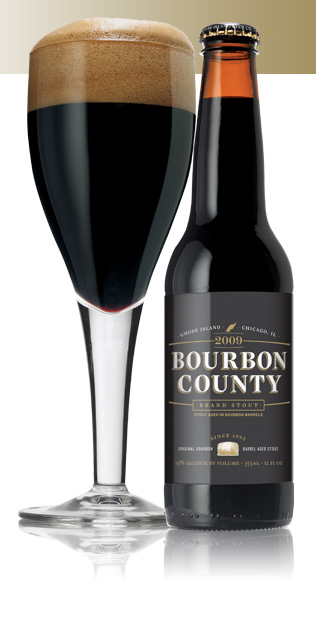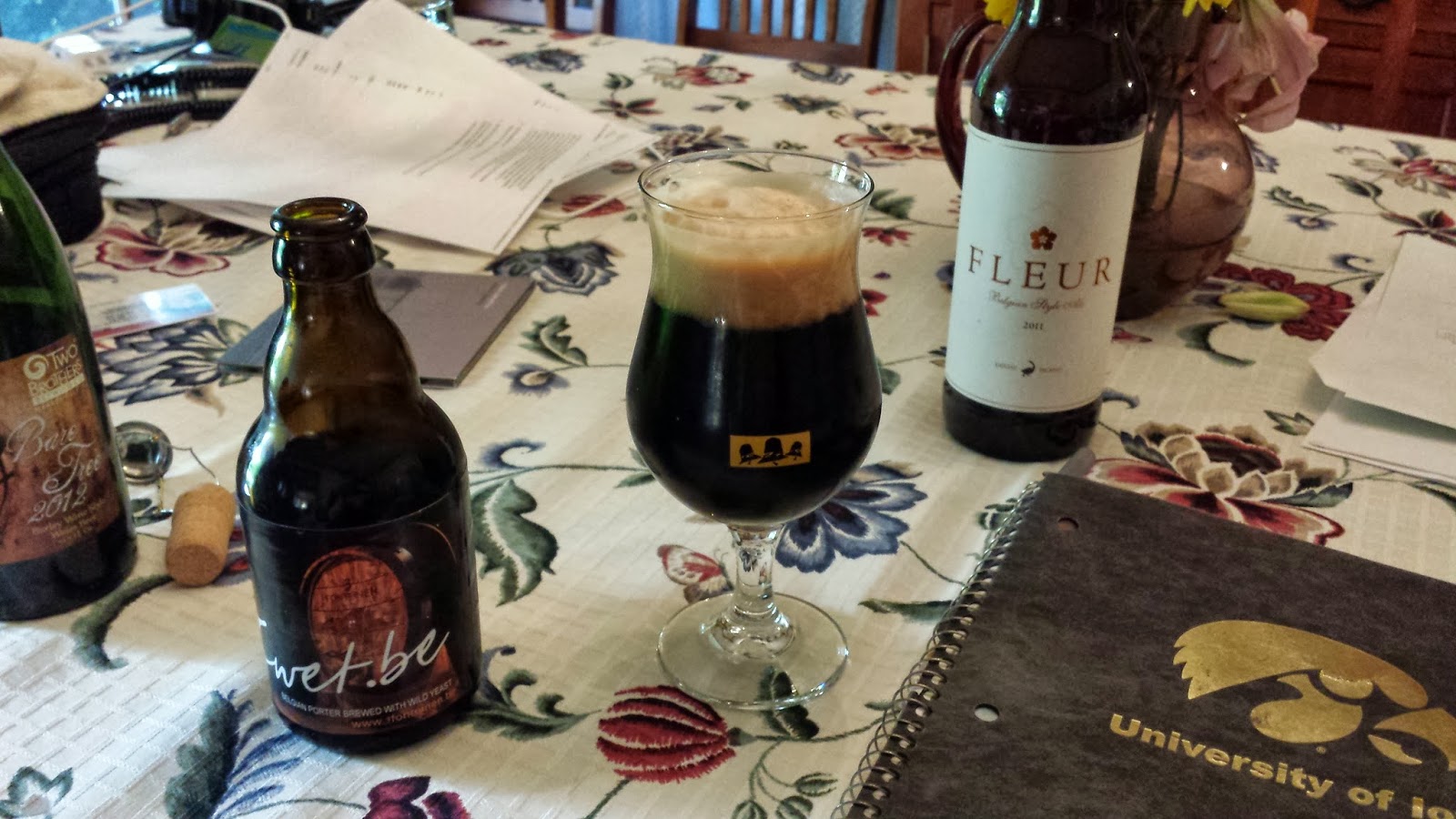The picture you see up above is what I had on November 29,
2013, in celebration of my upcoming birthday.
It is Goose Island Bourbon County Barleywine. Every year since 1992, Goose Island has made
a stout called Bourbon County Brand Stout (BCBS). It is aged a few months to a year in bourbon
barrels ranging in age from eight to sixteen years. In 2010, they released a beer called BourbonCounty Rare: it was aged for two years in rare twenty-three year old bourbon
barrels. They liked the barrels so much
they reused them to age a barleywine for a few months, which was released as
King Henry in 2011.
I do not expect to ever taste a beer, wine, whiskey, or any
food (period) that tastes as good as King Henry did. That beer was, is, and forever shall be
legendary. This particular beer is modeled after it: similar recipe, but aged in regular BCBS barrels. So if you look at the ratings for King Henry,
you can probably imagine the amount of hype this beer generated before
release. I am happy to say it exceeded
my expectations even though it has not eclipsed King Henry (which is impossible).
As you can see above, at first glance the appearance of
Bourbon County Brand Barleywine (BCBB) is identical to that of a stout. If you could reach into your computer screen,
pull that glass out, and hold it up to the nearest light, you would see it is
actually a little transparent.
Barely. It is also moderately
redder than that picture betrays. It is
decently carbonated like a fresh bottle of BCBS, but also like BCBS it is
incapable of forming a coherent crown of foam for more than three seconds. I don’t mind; a beer’s appearance is the
least relevant part.
The aroma of BCBB suggests toffee dipped in chocolate,
pecans dipped in chocolate (with more toffee), marshmallow, and molasses. It’s all here. Apart from the marshmallow, this doesn’t have
that vanilla nose that King Henry had, but it is still recognizable as being
cut from the same cloth. Oak and whiskey
are very, very subdued in the aroma; this smells like it absorbed more of the
stout than King Henry did, hence the stronger chocolate aroma.
I taste molasses, mild ethanol heat, whiskey and caramel up
front. The heat is more present than in
King Henry, but in no way a distraction---it is far less obvious than it is in
fresh BCBS. The aftertaste of this beer
is…not an aftertaste. It’s an afterglow,
the little bit of hazy color you see when you’ve been staring into a bright
light for a few minutes and then turn it off.
Except instead of red and green and black dots in my eyes, it is flavors
of toffee, vanilla, marshmallow, walnuts and milk chocolate. All of those flavors mixed together make a
great combination. I would say milk chocolate
slightly edges the others out, a result of the stout component, but it is
distinct from a lot of other chocolate-like flavors found in stouts. It resembles milk chocolate more than dark
chocolate.
I could see this being almost too sweet after a year or two
of cellaring, but this fresh the mild alcohol burn still keeps the sugar in
check. It also has enough carbonation to
prevent the texture from being too thick.
Even without the carbonation, I don’t think this would ever be as thick
as the stout is. It lacks the oiliness
of that beer.
This beer really is a treat everyone owes themselves a
chance to try. Given the crazy hype
surrounding it I wouldn’t be surprised if it’s all sold out now since it has
been out for the incredibly long period of…um, twelve days. However, it was released in four-packs. For Goose Island, that means they will make
it again, probably every year. Make sure
to keep an eye out for it next November or December.












